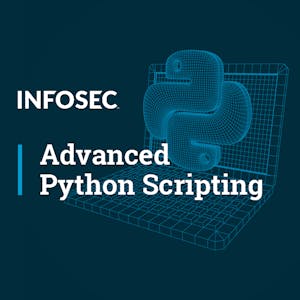Python is a powerful programming language widely used in cybersecurity. This comprehensive path explores advanced Python features for offensive and defensive cybersecurity applications. Learn to automate reconnaissance, command-and-control establishment, credential acquisition, and defensive network analysis using Python.
Certificate Available ✔
Get Started / More Info
This course includes three modules: Advanced Python - Reconnaissance, Establishing Command-and-Control and Finding Credentials, and Defensive Python.
Welcome to advanced Python for Cybersecurity. The Reconnaissance course demonstrates the use of Python to automate the process of performing reconnaissance on target environments. We will also demonstrate how Python can be used to automate a password-guessing attack to gain initial access to a target environment.
This course demonstrates the use of Python to establish command-and-control channels between a target environment and the attacker's infrastructure. Additionally, learn to collect information on a system, including user credentials and other sensitive data using Python.
Defensive Python course demonstrates the use of Python for network analysis to detect and hijack suspicious connections.
Grâce à des conférences enregistrées, des démonstrations et des ateliers pratiques, les participants explorent et déploient les composants d'une solution Google...
Hardening Default GKE Cluster Configurations is a self-paced lab that demonstrates security concerns of default GKE cluster settings and how to prevent pod escape...
Palo Alto Networks Security Operations Fundamentals course provides insights into Security Operations (SecOps) and its vital role in safeguarding digital assets....
Delve into Security Information and Event Management with Splunk in this 10-week course. Gain hands-on experience in data analysis, incident response, and real-time...